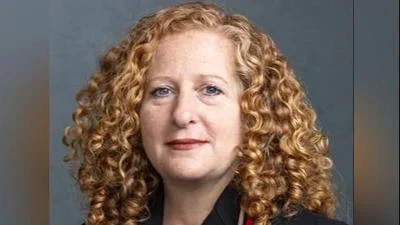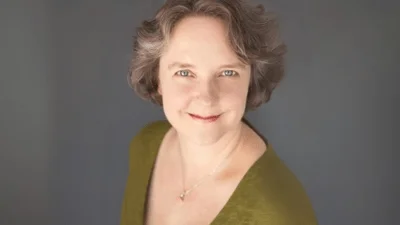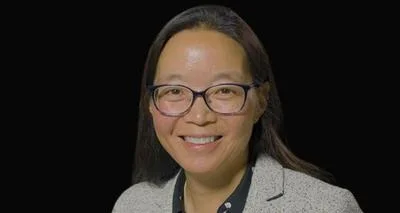Catholic Diocese of Madison issued the following on Dec. 30
Religious Sister discovers love for the ancient Christian art of iconography
"When you find something that you really love to do, and you're passionate about it, it changes everything," said Sr. Anne Joseph from the Sisters of Mary Morning Star in Monona.
She was speaking about her recent involvement in the practice of "writing" icons, an ancient Christian art form that dates back to the earliest centuries of Christian history.
These pieces of art, known for their non-realistic, heavily symbolic, and copied imagery (writing an icon is more often a process of carefully repainting a pre-existing image with much tradition and history behind it), were not something Sister Anne said she fully appreciated when she first dabbled in the art form in high school. Back in about 2005, she took a class in iconography through the Institute of St. Joseph in Boyd, Wis.
"I wasn't originally attracted to them," she said. "But I was kind of an artist."
She said that it was more of her dad who really loved icons. "At the time, I wanted to do more realistic paintings."
But she says she believes her 11 years at the Sisters of Mary Morning Star convent prepared her to develop a better appreciation for the practice of writing and praying with icons.
A new opportunity
It was early March of this year, just before the world was turned upside down with the coronavirus, that Sister Anne was given the second opportunity in her life to get involved in iconography.
Drazen Dupor, who has been teaching iconography in the Madison area since 2003, was offering a three-session class at Immaculate Heart of Mary Parish in Monona.
Sister Anne saw the advertisement and was interested, but due to the cost of the class, she thought it best not to ask her prioress for permission to take the class.
"So, what happened was quite providential," she said. "My prioress asked me and another Sister if we wanted to do this icon class, and I said, 'Yes!' Like you don't even know that I actually do icons. So we did the class, and I really loved it."
Dupor said he immediately recognized her talent.
"I noticed that Sister Anne works very nicely and often invites me to explain her technique and color," he said. "It was clear to me that she was very talented and interested in learning."
After the initial class, Dupor offered to continue to teach the Religious Sister in his studio in Middleton, but soon the Safe at Home order was issued and Sister Anne was stuck in her convent.
"He gave me some supplies to work on things during the quarantine, and then after the quarantine was over was when I started going to his studio," she said.
A greater appreciation
Sister Anne says her second time exploring iconography has been different than her first. "Because of my years of Religious Life, I have gained a greater appreciation for it."
Contrasting it with more realistic religious artwork, she said, "I don't know how to describe it -- like an icon has a certain silence in it."
She described how in many icons, the image seems to be staring right at you. "I think maybe it is the big eyes. The big eyes are really neat and how they are often looking at you. It is not like how beautiful this person is that attracts you but is kind of their gaze that attracts you to an icon."
She added, that "They say that an icon is kind of like a window into Heaven, and yes, it is not quite of this earth. It leads you to contemplation."
Praying with an icon
Sister Anne described the process of writing an icon as a process that takes a lot of time and patience. When looked at as only an art form, it is easy to focus on the imperfections of the piece.
When describing the first icon she made in Dupor's class, she complained that at first, the Christ-image she made seemed a little cross-eyed.
"When I was writing the icon, I kind of saw the mistakes, especially after I learned a little bit more about the technique, and then I could really see I really didn't have it all together," she said. "I thought the icon was no good."
Still, she took her first icon back to her convent and hung it in her cell where she prayed with it for a couple of months. Staring in quiet meditation on the image, the gaze of her image drew her in.
"When I prayed with that image, I said 'Actually, he is not cross-eyed. He is actually very peaceful looking and that says something about the real Jesus.' But I didn't realize that until I prayed with it."
She also spoke of the symbolism embedded in icons. Dupor is currently working on an icon of the Trinity.
"It looks like three angels sitting at a table," she said. "The angel in the middle is representing Jesus, and then Jesus, we know from scripture, is at the right hand of the Father, so that means the Father is on Jesus' left, and the other one is the Holy Spirit. And then there is what is on the table. There is a dish with a lamb's head on it or sometimes it is the head of Jesus himself, so that is representing the Eucharist. And then there are the napkins."
She said that not all iconographers seem to know of their significance, so they don't always put the detail in, but the placement of the napkins is rooted in a symbolic gesture indicating whether you are happy with the meal and whether you plan on returning.
"And so, on the Trinity icon, you can see that the napkins are kind of in a mess, and so that means that the Trinity is coming back," she said.
Original source can be found here





 Alerts Sign-up
Alerts Sign-up